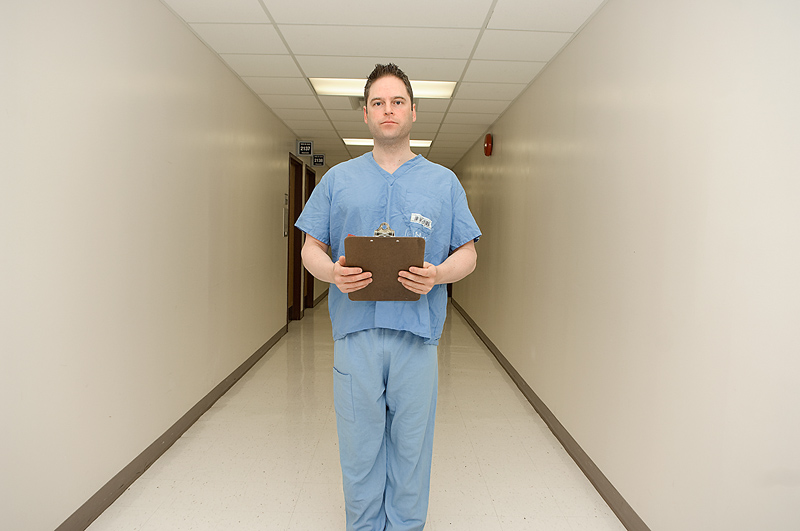
THURSDAY, Oct. 24 (HealthDay News) — Patients with prostate cancer may be encouraged to get radiation therapy by urologists who own the equipment, new research suggests.
According to study author Jean Mitchell, a professor of economics at Georgetown University, the use of expensive radiation treatments has increased substantially in practices that own the equipment.
“Since about 2005, a number of urologists have decided to invest in expensive radiation treatment [equipment],” Mitchell said.
Between 2005 and 2010, the number of men with prostate cancer who received radiation therapy from doctors who owned their own equipment increased significantly more than it did among patients whose doctors did not own their own equipment, Mitchell said.
This radiation therapy, called intensity-modulated radiation therapy, is one of the definitive treatments for prostate cancer. The others are surgery to remove the prostate and implanted radiation treatment. Many men also opt for no treatment — sometimes called watchful waiting.
“The bottom line is that the increase in the rate of radiation therapy by self-referring urologists is almost entirely due to the financial incentives that are linked to ownership,” Mitchell stated.
Dr. Len Lichtenfeld, deputy chief medical officer of the American Cancer Society, said urologists make only about $1,100 for surgery to remove the prostate, and watchful waiting involves only the limited cost of office visits and imaging.
Radiation treatment, however, can cost between $31,000 and $40,000, depending on where in the country patients are treated, Mitchell said.
“This is really showing that financial incentives really influence physician behavior,” she said. “Patients have to wonder, ‘Am I getting the treatment because it’s really the best, or am I getting the treatment because my urologist is making money off of it?'” Mitchell said.
The report, funded by the American Society for Radiation Oncology, was published in the Oct. 24 issue of the New England Journal of Medicine.
The radiation equipment costs about $3.7 million, Lichtenfeld said. “If, however, the practice can get the equipment for less and if they can run it more than the Medicare-anticipated use, they can end up making a substantial amount of money. It clearly drives urology practices to invest in this machinery, and get radiation oncologists on board,” he noted.
“The real question is whether the treatment was appropriate or not,” Lichtenfeld said.
One expert agreed, and cautioned patients to ask whether radiation is the best option.
“You have to wonder if surgeons, who normally operate on prostate cancer, referring patients to radiation oncologists within their own practice is self-serving,” said Dr. Anthony D’Amico, chief of radiation oncology at Brigham and Women’s Hospital in Boston.
D’Amico advises patients to ask if the medical evidence for their case supports radiation or surgery.
“The correct answer is either yes or no. If there is a choice, the patient should be told that the medical evidence is inconclusive. That’s what they need to hear, because that’s the truth. Most of the time, there is a choice,” he said. “If they say the medical evidence in your case says it should be radiation, then the patient has to wonder whether or not [they’re] getting it straight.”
Moreover, D’Amico said patients should get a second opinion.
One critic of the study, Dr. Deepak Kapoor, president of the Large Urology Group Practice Association, said the study represents a political agenda and that doctors aren’t pushing radiation therapy when they own the equipment.
He said the study misrepresents the actual data, and there is no real increase in the use of radiation therapy in practices that own their own equipment. In his view, the study is an attempt to persuade lawmakers to make radiation therapy for prostate cancer the sole province of radiation oncologists, which is why the association representing radiation oncologists funded the study.
But study author Mitchell painted a different picture.
“The urologists have tried to paint this as a turf battle, but in my view this is not their scope of practice,” Mitchell said. “I know some urologists who are making $1 million a year, and $700,000 of it comes from their ancillary services — radiation, pathology and imaging. Only $300,000 comes from what they were trained to do. And people wonder why health care is so expensive. This is one of the reasons. Everybody responds to financial incentives. Why should physicians be different? They’re not.”
But Kapoor said other studies show rates of radiation therapy have not gone up in practices that own radiation equipment.
“Mitchell’s own data shows that urology groups continued to manage patients’ treatment conservatively and appropriately after they integrated radiation into their practices,” Kapoor said.
“The percentage of patients choosing surgery also remained virtually unchanged,” he said. And the percentage of patients placed on active surveillance, or watchful waiting, remained virtually the same before and after integration of radiation therapy, he said.
“The fact that active surveillance rates held constant shows that ownership of integrated intensity-modulated radiation therapy did not affect these groups’ clinical decision-making,” Kapoor said.
Mitchell dismissed the criticism as unfounded.
“If they didn’t scream and yell, I would be surprised,” she said.
“My study has met the test of scientific scrutiny,” Mitchell added. “I did the analysis three times, and came up with the same results. My findings corroborate the findings of the U.S. Government Accountability Office. So here are two studies that are showing the exact same pattern,” she pointed out.
“I’d consider the source of the criticism,” Mitchell said. “These are all people who have a vested interest in making sure they are able to continue this practice. I don’t have a vested interest in this at all, and the same can be said for the U.S. Government Accountability Office.”
For the study, Mitchell used Medicare records to compare the use of intensity-modulated radiation therapy in urology practices before and after buying the equipment.
She found that after buying the equipment, the rate of patients who got radiation therapy rose from 13.1 percent to 32.3 percent.
Over the same period, the use of radiation therapy among urologists who didn’t own the equipment increased only from 14.3 percent to 15.6 percent, Mitchell said.
In addition, the use of radiation therapy at National Comprehensive Cancer Network centers remained at 8 percent, while it increased 33 percent among urologist groups that owned the radiation equipment, Mitchell said.
More information
For more information on prostate cancer, visit the American Cancer Society.
Copyright © 2025 HealthDay. All rights reserved.

